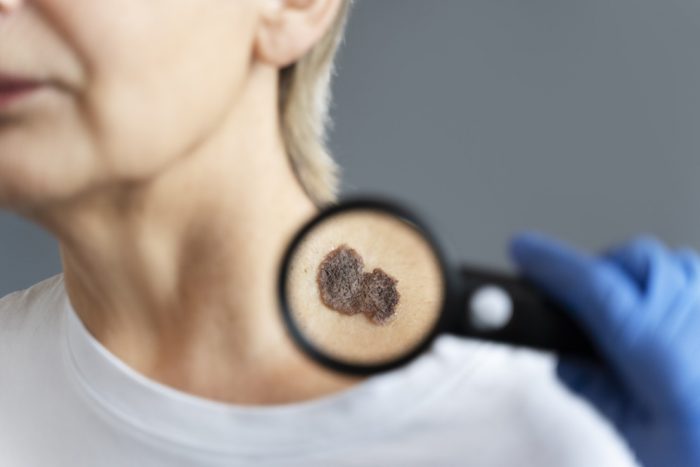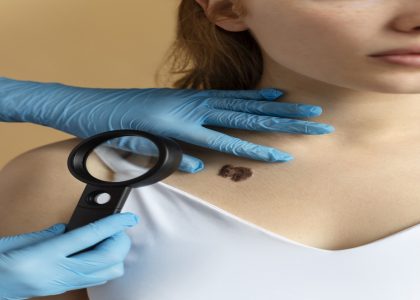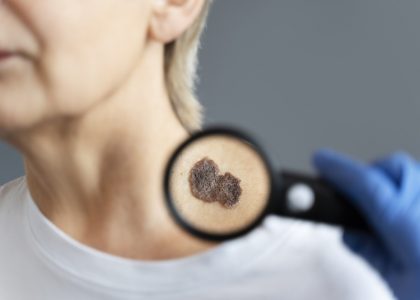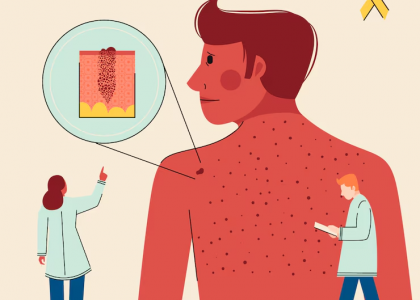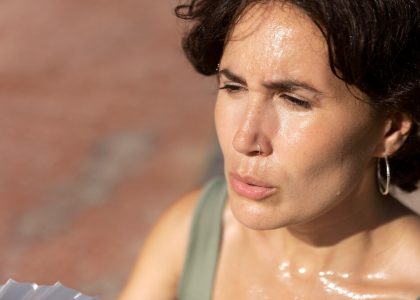As the sun’s rays beckon us to enjoy the outdoors, many people flock to beaches, pools, and lakes to take a refreshing dip. However, while swimming can be a delightful way to cool off and enjoy physical activity, it also comes with an inherent risk: skin cancer. This blog will explore the risk of skin cancer for swimmers and underscore the importance of regular skin checks to safeguard your health.
The Sun’s Impact on Skin Cancer for Swimmers
Swimmers are particularly vulnerable to UV radiation from the sun, which is the primary cause of skin cancer. Ultraviolet (UV) rays can damage the skin, leading to both immediate and long-term health concerns. Here are a few key points to understand:
Increased Exposure
- Reflected UV Rays: Water can reflect UV rays, amplifying exposure. This means that swimmers may be at risk even on cloudy days or when they believe they are adequately protected. According to research, UV rays can penetrate the water, and approximately 50% of UV radiation can reach individuals submerged just below the surface.
- Prolonged Exposure: Many swimmers spend extended periods in the water, often losing track of time. This prolonged exposure increases their risk of accumulating sun damage, even if they reapply sunscreen regularly.
Types of Skin Cancer Associated with Sun Exposure
There are three main types of skin cancer linked to UV exposure:
- Basal Cell Carcinoma (BCC): This is the most common form of skin cancer, often appearing as a small, shiny bump or sore that won’t heal. BCC is usually found on sun-exposed areas like the face and arms.
- Squamous Cell Carcinoma (SCC): SCC may appear as a red, scaly patch, a sore that doesn’t heal, or a wart-like growth. Like BCC, it is typically found in sun-exposed areas but can also develop in scars or ulcers.
- Melanoma: This is the most dangerous form of skin cancer. Melanoma can develop in existing moles or appear as new dark spots on the skin. It can metastasise quickly if not detected and treated early.
The Importance of Regular Skin Checks
Given the risks associated with UV exposure, especially for swimmers, regular skin checks are crucial for early detection and prevention of skin cancer. Here are several reasons why regular skin checks should be a part of every swimmer’s health routine:
Early Detection Saves Lives
Early detection of skin cancer dramatically increases the chances of successful treatment. According to the Skin Cancer Foundation, when detected early, the five-year survival rate for melanoma is 99%. Regular skin checks, both self-examinations and professional skin cancer screenings, can help identify any suspicious changes in the skin before they escalate into more serious conditions.
Know Your Skin
Understanding what is normal for your skin is vital for early detection. Skin cancer for swimmers should routinely perform self-examinations to identify any new moles or changes to existing moles. Look for:
- Asymmetry in moles (one half does not match the other).
- Irregular, jagged, or blurred edges.
- Multiple colours or uneven pigmentation.
- Diameter larger than 6mm.
- Any change in size, shape, or colour of a mole.
If you notice any of these signs, it is crucial to consult a healthcare professional immediately.
Professional Skin Checks
While self-examinations are important, professional skin checks by a doctors offer a more thorough assessment. Doctors are trained to recognise signs of skin cancer that may not be obvious to the untrained eye. They can also offer advice on skin health and prevention strategies tailored to individual needs, especially for those frequently exposed to the sun, such as skin cancer for swimmers.
Education on Safe Sun Practices
Regular visits to a doctor also provide an opportunity to discuss sun safety practices. Education on how to protect your skin while enjoying outdoor activities can significantly reduce your risk of skin cancer. Tips may include:
- Applying a broad-spectrum sunscreen with an SPF of 30 or higher at least 30 minutes before sun exposure and reapplying every two hours.
- Wearing protective clothing, wide-brimmed hats, and sunglasses to shield the skin from UV rays.
- Seeking shade whenever possible, especially during peak sun hours.
Additional Risk Factors
In addition to UV exposure, other risk factors can increase the likelihood of developing skin cancer, including:
- Fair Skin: Individuals with lighter skin types, especially those with freckles, blue or green eyes, or red or blonde hair, have a higher risk.
- Family History: A family history of skin cancer can increase your risk, making regular checks even more important.
- History of Sunburn: Those who have experienced severe sunburn, especially in childhood, are at increased risk for skin cancer later in life.
- Use of Tanning Beds: Using tanning beds increases the risk of skin cancer significantly, particularly in young people.
Conclusion
As the summer sun invites swimmers to dive in and enjoy the water, it’s essential to be aware of the risks associated with UV exposure and skin cancer. Regular skin checks both self-examinations and professional assessments, are crucial in safeguarding your health. Early detection can save lives, making it imperative skin cancer for swimmers and all individuals to prioritise their skin health.
At SunSkin Clinic, we are dedicated to promoting skin health and providing comprehensive skin checks for early detection and treatment of skin cancer. If you are a swimmer or simply enjoy spending time in the sun, take the necessary steps to protect yourself. Don’t hesitate to reach out to our team for guidance on how to best care for your skin. Remember, knowledge and vigilance are key to beating skin cancer. Stay safe and enjoy your time in the water!



